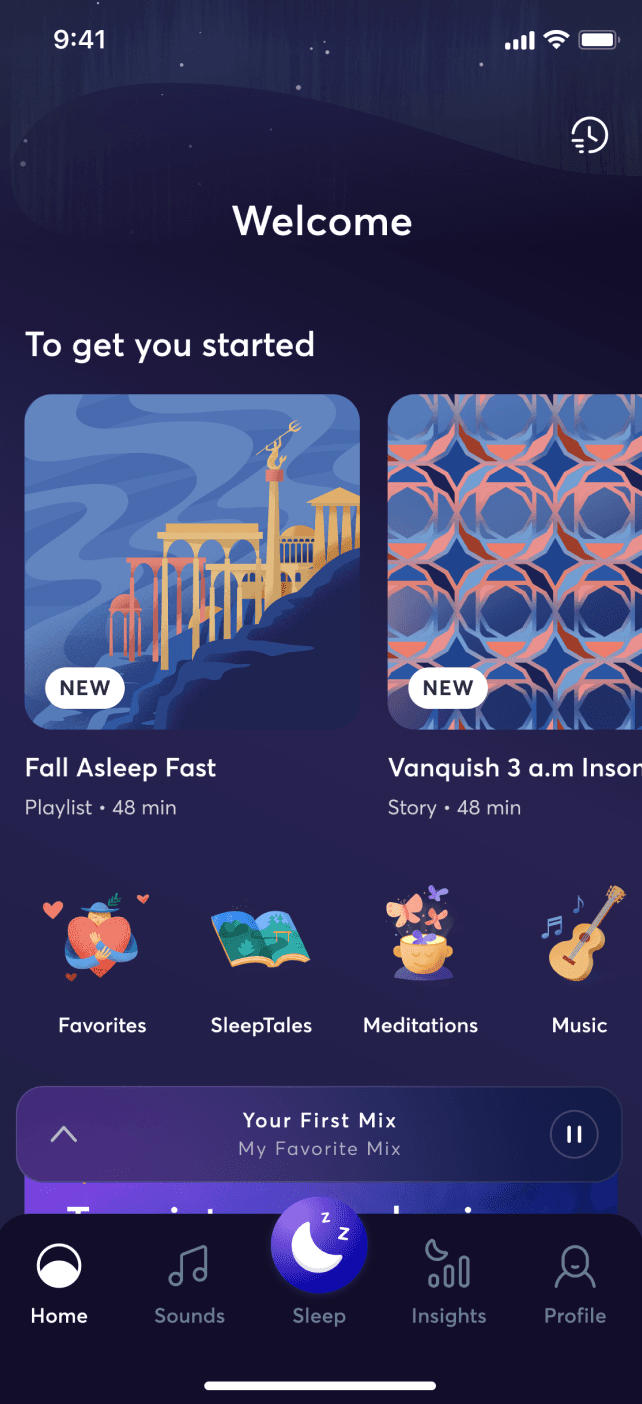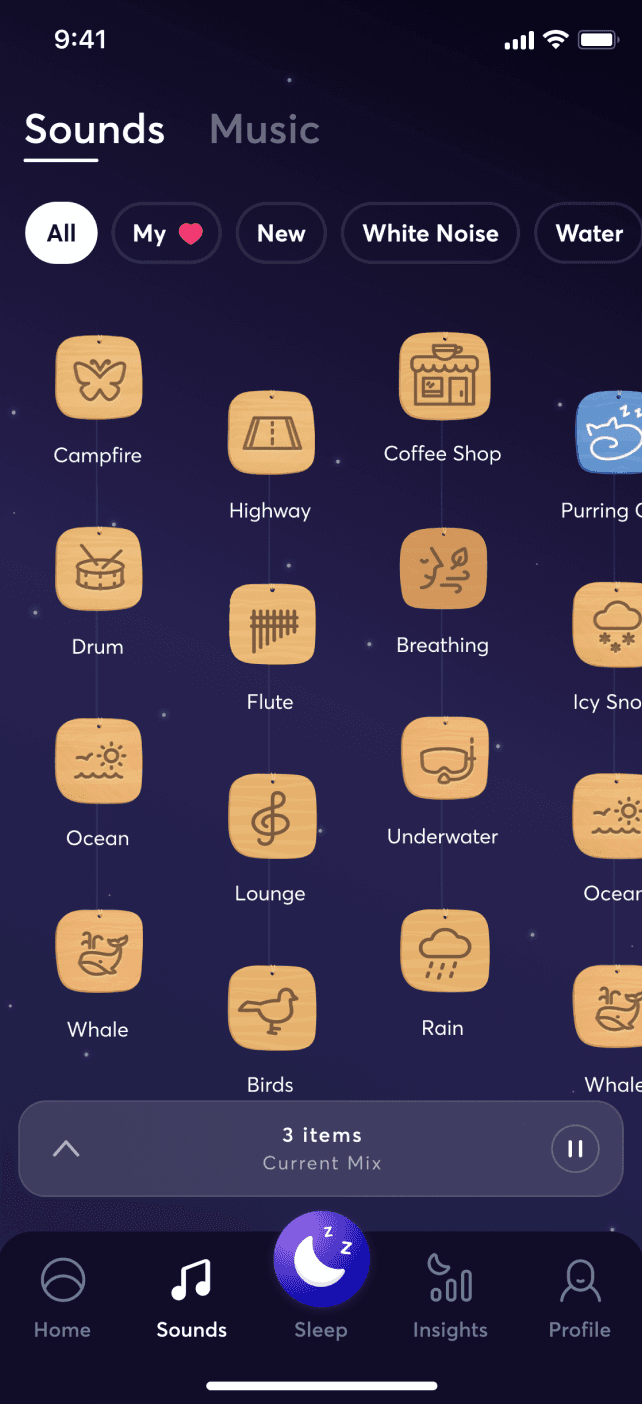
Healing Meditation for Trauma With Yoga Nidra
Trauma is a natural response to a frightening situation that manifests as an extreme form of stress. Trauma Triggers fearful memories, nightmares, insomnia, anxiety, and many physical symptoms. Yoga Nidra, a relaxation meditation, can be a powerful tool for healing from trauma while also helping you sleep better.
About Trauma
Not everyone reacts the same way to scary experiences. Some people develop trauma disorders after experiencing violence, a natural disaster, being in combat, and other life-threatening circumstances.
Trauma disorders, like post-traumatic stress disorder (PTSD), require professional mental health support, with relaxation practices like meditation as necessary aids for managing symptoms.
About Yoga Nidra Meditation
Yoga Nidra is an ancient type of meditation that induces a sleep-like state of relaxation. The goal is to achieve a state of consciousness between waking and sleeping. Many yoga classes end with a brief, guided yoga Nidra session to relax the mind and body after an invigorating workout.
The practice of Yoga Nidra meditation involves focusing on breathing and body sensations while relaxing the mind into another state of consciousness. The state is different from sleeping, but it is very restful. Some practitioners claim it provides better rest than a few hours of sleep.
Benefits of Yoga Nidra Meditation
Yoga Nidra can be practiced at home or at the end of a regular yoga class. Aim to practice on a set day and time each week to feel the full benefits. Yoga Nidra helps to:
Reduce Anxiety and Stress
A past study has shown Yoga Nidra to be more effective than general meditation at reducing the physical and cognitive symptoms of anxiety.
Another study looked at heart rate variability linked with autonomic nervous system balance. The findings were that a Yoga Nidra session on its own or after asana practice enhanced heart rate variability and promoted a relaxation response.
Allows Your Body to Heal
Although you remain conscious during a Yoga Nidra session, your brain is guided into a sleep state, producing delta brain waves (1 - 3 hertz) and theta waves (4 - 7 hertz).
Theta state is where you're deeply relaxed, like during REM sleep or hypnosis. Delta waves are the slowest waves experienced during dreamless, deep sleep. This delta level is where your body can restore and heal itself.
Beneficial in Healing Trauma
Yoga Nidra has been shown to help people heal and move on from trauma. One eight-week study looked at the efficiency of Yoga Nidra on combat veterans, with all reporting reduced rage and anxiety and increased feelings of peace, relaxation, and self-efficacy.
Aid in Reducing Chronic Pain
Our bodies need time to heal, and regular Yoga Nidra sessions help that happen. This yoga therapy moves you from doing and into just being, allowing your body to rest and repair. During this time, inflammation can decrease, reducing pain and speeding up the healing process.
Minimize PMS Symptoms
One study has even shown Yoga Nidra benefits those with menstrual irregularities. So, if your PMS symptoms are going crazy, or you're just feeling low, irritable, depressed, or anxious, Yoga Nidra is well worth trying out.
Reduces Insomnia and Improves Sleep
Yoga Nidra is known to improve insomnia and enhance sleep quality. If you struggle to get 7 -9 hours of sleep a night, this type of yoga will help train the mind and body to relax, encouraging restful sleep.
Improves Brain Function
During a Yoga Nidra session, your brain is asked to focus on the instructions. While you may struggle to concentrate initially, over time, your brain will become less distracted as it releases stress.
This means your focus and concentration levels can improve, and your mind will become much more straightforward. Also, yogic sleep practice has been shown to activate the brain's right hemisphere, which helps the brain retain information more easily.
May Reduce Symptoms of Type 2 Diabetes
Yoga Nidra and other deep relaxation practices benefit those with type 2 diabetes. A study in the Indian Journal of Physiology and Pharmacology found that Yoga Nidra positively affected blood glucose levels in diabetic patients.


What Does Yoga Nidra Do to the Brain?
Yoga Nidra benefits the brain by shifting brainwaves into a state of repair and regeneration. Scientists and yoga gurus agree that Yoga Nidra meditation can significantly improve stress levels, sleep quality, and mental health.
Yoga Nidra is otherwise known as 'yogic sleep.' And this is for a good reason, as students of Yoga Nidra often walk out of a session saying it feels like they've had the best nap of their life.
Past studies have shown Yoga Nidra affects the production of neurotransmitters and hormones in our bodies and brains. During a Yoga Nidra session, the parasympathetic nervous system is activated, leading to a drop in the stress hormone cortisol.
By ridding the body of excess cortisol, you also reduce your risk of diabetes, inflammation, obesity, and cardiovascular disease.
Yoga Nidra also boosts serotonin production, the happy neurotransmitter responsible for regulating mood, sleep, behavior, and appetite.
Yoga Nidra is also known to increase GABA production in the brain. This is an inhibitory neurotransmitter that slows down nerve cell signals, helping to instill calm.
Finally, Yoga Nidra helps stimulate the production of oxytocin in the brain. This pleasure hormone makes us feel good and has a role in reproduction, arousal, romantic, and parental bonding.
What Happens to Your Brain Waves
You'll be taken through the Nyasa stage during a Yoga Nidra session. You are asked to feel body parts in order, triggering a relaxation response.
As you relax, both parts of your nervous system are balanced: the sympathetic nervous system (fight or flight mode) and the parasympathetic nervous system (rest and digest).
During this process, your brain waves shift from the beta brainwave state (which is awakened and highly active) to the alpha brainwave state (which is relaxed and calm). This is the state where you can begin to rest and restore.
When Should You Not Do Yoga Nidra?
The only time Yoga Nidra is best, not practiced, is right after eating. This is because you're likely to fall asleep and may feel uncomfortable with a full stomach.
Yoga Nidra Aids Healing From Trauma
Trauma significantly impacts mental health, sleep, and physical health. While trauma disorders require professional treatment, yoga Nidra is a valuable supplement. It can help you relax, heal, and get a better night's sleep with fewer nightmares.
One of the most important studies to prove that yoga Nidra helps manage trauma involved combat veterans with PTSD. The Department of Defense worked with the Integrative Restoration Institute to develop a yoga Nidra protocol known as iRest for traumatized veterans. The practice involved recognizing negative feelings and sensations and then imagining their opposites.
The study found that eight weeks of practice with the protocol reduced anxiety, anger, and emotional outbursts. Conversely, the practice increased self-awareness, a sense of peace, and relaxation. Similar studies have found that Yoga Nidra is beneficial for managing depression, anxiety, substance abuse, grief, and insomnia.
How to Use Yoga Nidra for PTSD (Post Traumatic Stress Disorder)
Yoga Nidra is effective at healing a range of stress disorders. If you're experiencing PTSD symptoms, Yoga Nidra can help you gradually heal and become more relaxed. Guided sessions are recommended, which follow these simple steps:
Relaxation
You'll be asked to focus on your breath in the first stage. This helps to trigger the nervous system, allowing you to relax.
Setting an Intention
Here you'll be asked to set a short intention or to make a statement in your mind. Think of your desired outcome for the session, like I am relaxed, I can change my life, or I am at peace.
- Body scan. Next, you'll be asked to scan every part of your body, from the toes to the top of your head. Notice any pain or tension and release it.
- Greater awareness of breathing. As your practice continues, the aim is to keep your breathing steady. You'll be encouraged to withdraw from the outer world and to turn inwards towards a deeper state of relaxation.
- Feeling opposite sensations. Here you'll be asked to give attention to opposing bodily sensations, such as pleasure and pain or heat and cold.
- Visualizations. Next, your yoga practitioner will guide you through a series of images you'll be asked to visualize. This may help to unlock a repressed memory in your subconscious mind, which helps you to understand what they mean.
- Sankalpa. Here you'll reach the borderline state between sleeping and being awake. You should revisit the intention you made earlier to allow it to sink into your subconscious.
- Externalisation. In this final stage, you should concentrate on your breathing again. To finish, you'll be asked to focus on your body and the room until you're fully conscious and back to an awakened state.
A Yoga Nidra session typically lasts 35 to 40 minutes and is thought to be as restorative as three hours of sleep. People often feel immediate benefits such as better sleep and lowered stress levels, and for those with PTSD symptoms, it can help heal psychological wounds over time.
How to use Yoga Nidra to Improve Sleep and Manage Trauma
The best way to begin using Yoga Nidra to manage trauma is to try guided sessions, such as those offered on BetterSleep. A session of Yoga Nidra typically includes five components to control negative emotions and induce relaxation:
- A scan of the body to become aware of sensations
- A focus on breathing
- Balancing of emotions
- Visualizing the opposite of negative emotions and sensations
- A focus on self-healing
If you or someone you care about struggles with past trauma, realizing that Yoga Nidra is not a substitute for treatment is essential. Use it only as a supplement to professional mental health care.
Conclusion
The research on Yoga Nidra practices for people with trauma disorders is promising. It provides evidence that this ancient technique promotes relaxation and sleep and aids psychological healing.
There are many different Yoga Nidra programs. It can be performed with music or without, in a class or on your own at home. It's important to try out different variations and see what works for you.
As a beginner, try out a guided Yoga Nidra session on the BetterSleep app. This way, you can perform your session in a space you feel comfortable in and at a time that suits you.






















